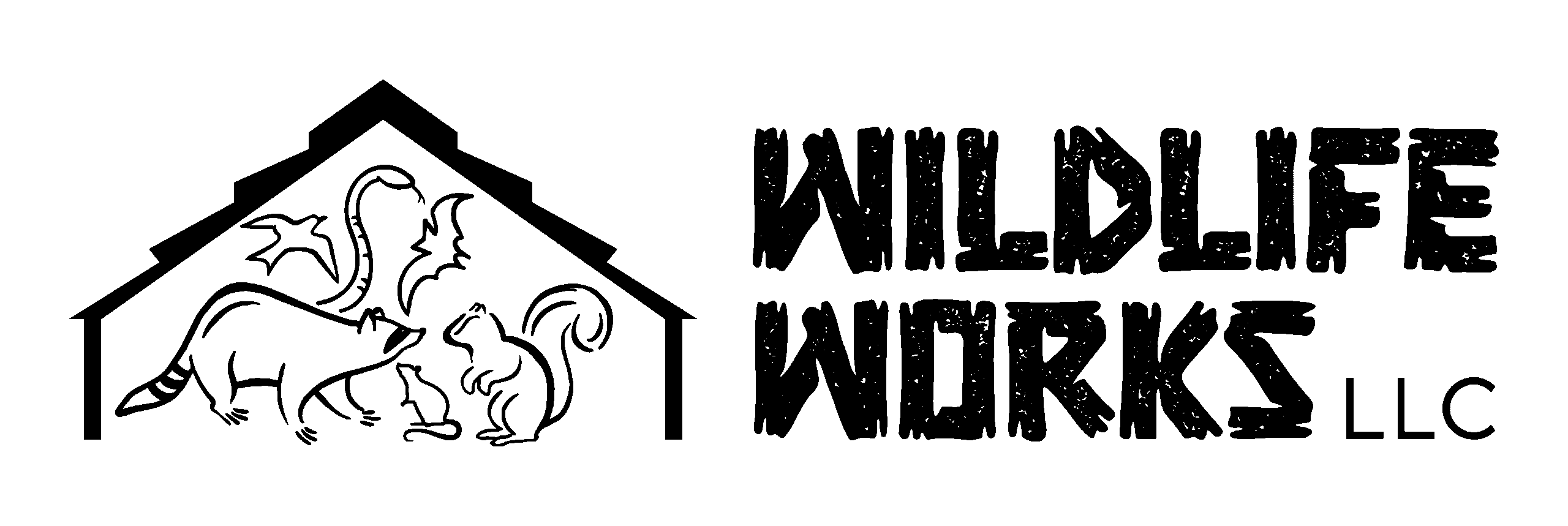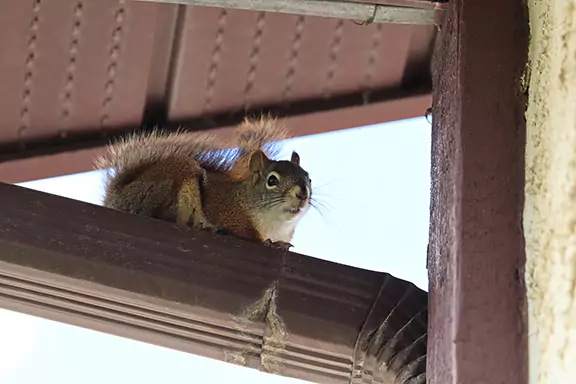If you’ve ever heard scratching noises in your ceiling or found shredded insulation in your attic, you might have uninvited guests—squirrels. In Central Florida, attic squirrels are a common problem, especially during cooler months when they’re looking for warm, quiet spaces to nest. While they might seem harmless at first, squirrels can cause real damage to your home’s structure, wiring, and insulation.
The good news? Preventing squirrels from entering—or returning—is entirely doable with the right approach. This article will walk you through how to squirrel proof your attic step-by-step, and what signs to watch for before small problems turn into costly repairs.
Why Squirrels Choose Attics
Your attic offers exactly what a squirrel is looking for: warmth, safety, and nesting space. Female squirrels, in particular, look for secluded places to raise their young starting in late winter. Once inside, they’ll use insulation, cardboard, or stored fabrics to build nests and may return year after year if not blocked.
Access is often easier than most homeowners realize. Squirrels can jump from overhanging branches, squeeze through small gaps around soffits or vents, and even chew their way in if they find a weak spot. Attics filled with boxes, stored items, and limited foot traffic are ideal environments for them to go undetected for weeks or longer.
Signs You Have a Squirrel Nest in Your Attic
You don’t need to see a squirrel to know one’s taken up residence. Common warning signs include:
Noise: Scratching, chewing, or rapid movement sounds, especially at dawn or dusk
Chewed Materials: Damaged wires, wood, or plastic around rooflines or inside attic spaces
Droppings: Small, oblong pellets often found near insulation or nesting areas
Odor: A strong, musky smell from urine or nesting debris
Nesting Signs: Torn insulation, leaves, or shredded paper in corners or between beams
If you notice any of these issues, it’s important to act before a single squirrel turns into a full family.
Step-by-Step: How to Squirrel-Proof an Attic
Step 1: Inspect for Entry Points
Start with a full exterior inspection of your roofline. Pay close attention to gable vents, soffits, fascia boards, chimney flashing, and anywhere utilities enter the house. Squirrels can squeeze through holes as small as 1 inch and will often chew to widen a gap. Look for signs like chew marks, oily smudges, or droppings near potential access points.
Step 2: Trim Tree Branches and Remove Access Routes
Squirrels are excellent jumpers. Trim tree limbs so they’re at least 6–8 feet away from your roof. Also, remove overhanging vines or structures that give them a bridge to your home. If you feed birds, consider relocating feeders far from your house to reduce temptation—bird seed is a major draw.
Step 3: Seal and Reinforce Potential Entry Areas
Once you’re sure no squirrels are currently inside, seal all access points using hardware cloth, sheet metal, or other chew-resistant materials. Avoid materials like spray foam or plastic, which squirrels can easily destroy. Reinforce attic vents and roof edges with metal flashing where possible.
Step 4: Remove Attractants Around the Home
Even the most secure attic can be compromised if squirrels are constantly drawn to your property. Removing food sources is key. Start by eliminating or relocating bird feeders, and clean up any spilled birdseed or animal feed. If your yard includes oak, pecan, or walnut trees, regularly clear away fallen nuts and acorns that squirrels use for food.
Reducing these attractants makes your home far less appealing and helps discourage squirrels from trying to re-enter after exclusion work is done.
Step 5: Consider Professional Removal Before Sealing
If you suspect squirrels are already inside, don’t seal them in. This is especially critical during late winter and early spring, when baby squirrels may be present. Professional pest control wildlife specialists can install one-way exits or safely remove a nesting mother squirrel and her young before full exclusion.
What Doesn’t Work Long-Term
Many DIY approaches seem promising but rarely keep squirrels out for good:
Bright lights or loud noises might scare them temporarily, but squirrels often adapt
Squirrel Repellent wears off quickly or gets ignored when nesting opportunities are too good
Traps without proper exclusion simply remove one squirrel, leaving the entry point open for others
Waiting it out allows damage to grow worse—squirrels don’t leave voluntarily once they’ve nested
A permanent solution means making your attic a place squirrels can’t access, not just a place they don’t like.

Risks of Ignoring the Problem
Letting squirrels stay in your attic might seem like a short-term convenience, but it often leads to long-term damage. Squirrels chew constantly to wear down their teeth—and that includes electrical wiring, wood framing, and ventilation ducts. This behavior can increase the risk of electrical fires, water damage, and even structural issues.
Their droppings and urine soak into insulation and wood, creating strong odors and unsanitary conditions. Over time, these contaminants can attract other pests like insects or rodents. If a squirrel dies in the attic, the cleanup becomes even more unpleasant and expensive.
And if they’re not sealed out properly, expect them to return, often with littermates or a new nesting cycle.
Take Action and Block Squirrels from Your Attic
Squirrel-proofing an attic isn’t just about addressing a nuisance—it’s about safeguarding your home. The best outcomes come from combining early detection, physical exclusion, and, when needed, professional support to ensure squirrels are gone for good.
Need to Get Rid of Squirrels in Your Attic?
If you’re dealing with squirrels in your attic or want help making sure your home stays squirrel-free, contact Wildlife Works. You can also explore our Squirrel Removal Services page to learn more about how we prevent and remove these persistent animals.

